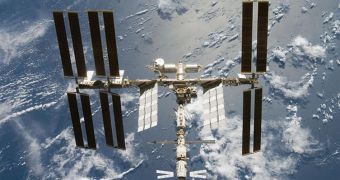In a conference on September 27, officials from the European Space Agency announced that the organization will seek funding from its member states to invest in the development of a reentry vehicle.
ESA believes that a spacecraft capable of returning cargo and experiments from the International Space Station back to Earth would be an invaluable asset for the agency, and for Europe.
At this point, the organization only operates the Automated Transfer Vehicle (ATV), which is a spacecraft capable of carrying tons of supplies to the orbital facility.
However, it cannot reenter Earth's atmosphere without burning up, which means that it cannot be recovered, or used to ferry experiments and other loads from the ISS back to Earth.
Creating a vehicle capable of doing this is among the things ESA wants to request approval for, right alongside extending its support for the $100 billion ISS project until at least 2020.
At the recent conference, the ESA officials said that they would basically call for a five-year extension on a program seeking to convert the ATV into a reusable vehicle.
However, the experts admitted that this project makes sense only if the life of the space station is extended beyond 2020. Initial plans called for it to be deorbited in 2015.
But an extension of its program would justify the money spent researching and developing an Advanced Re-entry Vehicle (ARV).
Simonetta di Pippo, the ISS director at ESA, said that it will take about 150 million euros ($200 million) for the new spacecraft to undergo preparations for development.
The actual costs of the program would be a lot higher. A formal proposition will be submitted in a meeting of ESA member states in 2012.
“There is no objection to extending the station's operations to 2020. What still needs to be decided is the cost, and the scale of contributions,” said Jean-Jacques Dordain, the ESA Director-General.
“I don't want an approval now without deciding this aspect as well. I hate decisions that are 'subject to availability of funds',” he went on to say, quoted by Space.
“What we need to agree to now is the distribution of costs. That is the difficult part,” he concluded. The two ESA officials were participating at the 61st International Astronautical Congress.
At this point, the launch of the second ESA ATV, called Johannes Kepler, is scheduled for February 2011. The first ATV, Jules Verne, was launched in 2008.

 14 DAY TRIAL //
14 DAY TRIAL //